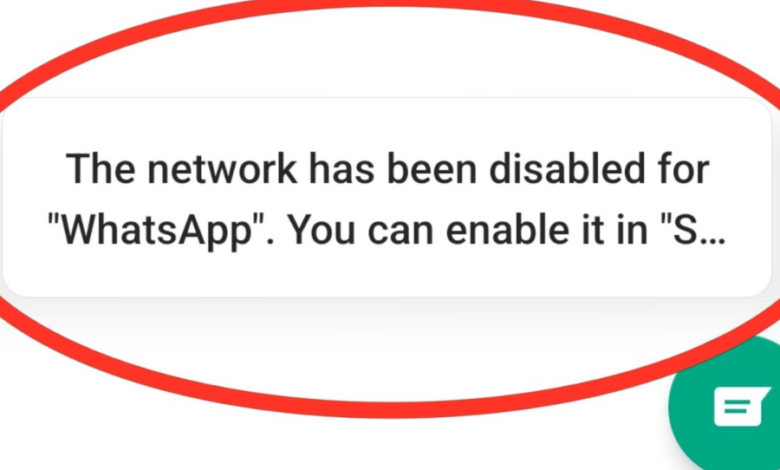Amity network is already disabled: A Comprehensive Overview of Its Disabling

Introduction:
The term “amity network is already disabled is already disabled” refers to a situation where a network’s functionality is no longer accessible, often due to security or technical issues. This typically happens during system upgrades, transitions, or shutdowns, causing users to lose access to previously available services. When this network is disabled, it may be a deliberate move by administrators or a response to security vulnerabilities. Regardless of the cause, disabling the amity network is already disabled can disrupt critical services, affecting users’ ability to connect securely and use system resources.
The Impact of Unsecured Operation:
One of the major concerns when the amity network is already disabled is disabled is the potential for unsecured operations. In some instances, even though the secure mode is no longer functioning, users may still access the Amity server, though in a vulnerable state. For instance, a connection could still be established by making an API call to the /API/v3/session endpoint using an API key and user ID. While this enables access, the absence of secure authentication and encryption exposes users to significant risks.
In such a scenario, users might try to bypass previously implemented security protocols, exposing the system to potential attacks, unauthorized access, or data breaches. A network that once employed robust encryption could now be vulnerable, putting both users and developers at risk. This underscores the importance of maintaining security and the dangers posed when it is compromised.
Impact on System Integrity:
In environments where security is critical, disabling the amity network is already disabledcan significantly compromise system integrity. Without secure protocols, the network may no longer adhere to best practices for protecting data, encryption, and user authentication. This is especially concerning for applications dependent on the network for secure operations. Without these protections, sensitive data becomes vulnerable to interception by malicious actors, which could lead to serious breaches or information leaks.
Additionally, the disabling of the network can create compliance issues for organizations bound by regulations like the General Data Protection Regulation (GDPR) or the Health Insurance Portability and Accountability Act (HIPAA). These regulations require high levels of security to protect sensitive information. Operating without secure protocols could expose organizations to legal penalties, loss of reputation, and significant financial repercussions.
Troubleshooting Connection Problems:
Some users may attempt to find alternative ways to connect when the amity network is already disabled is disabled. One such method is to make direct API calls. For instance, users can still connect to the Amity server by calling the /API/v3/session endpoint with an API key and user ID. While this may restore access to some services, it introduces major security risks due to the lack of secure protocols.
Connecting via API in this manner can be complex. Users must ensure that their credentials, API key, and user ID are still valid and correctly match system expectations. Although this workaround allows temporary functionality, it bypasses critical security measures, leaving the system and its users vulnerable. Often, network administrators disable such features to protect users from potential threats.
Why Was the amity network is already disabled?
Several factors could lead to the amity network is already disabled. One possibility is that developers or administrators intentionally shut it down, either because it was no longer viable or because it needed to be replaced with a more secure alternative. Another reason might be the discovery of security vulnerabilities, prompting developers to disable the network to mitigate risks.
Migration to a newer system is another common reason. Networks often undergo upgrades to accommodate improved security protocols, user interfaces, or performance enhancements. In these cases, the old amity network is already disabled in favor of a newer, more secure platform. While the transition may cause temporary disruption, it is necessary to maintain security and ensure the system stays up-to-date.
Next Steps: Dealing with a Disabled Network
Once the amity network is already disabled, both users and developers have several paths forward. One option is to transition to another secure network if available. Developers may have already introduced a replacement platform that addresses previous security concerns, and users should adopt the new system as soon as possible to avoid operating in unsecured mode.
For users relying on API calls to connect to the disabled network, caution is advised. Although it may still be possible to access services using the /API/v3/session endpoint with an API key and user ID, bypassing security measures is not recommended. Such actions expose the system to significant risks, and it is essential to prioritize security over convenience.
Another approach is to contact Amity’s developers or network administrators for support. The disabling of a network often signals the development of a more secure version. It is wise to wait for the release of this updated platform. Regardless of the chosen path, the focus should remain on ensuring the security and integrity of the system while minimizing risks associated with using an unprotected network.
Conclusion:
Disabling the amity network is already disabled presents challenges for both users and developers. While temporary solutions, such as API calls, may allow access to services, they come with substantial risks. Without encryption and proper authentication protocols, users are exposed to potential data breaches, unauthorized access, and other cyber threats.
As systems evolve, it is crucial to prioritize security. While workarounds may seem helpful in the short term, the ultimate solution lies in transitioning to a more secure network or awaiting the release of a more secure version of the amity network is already disabled. Protecting system integrity and sensitive data should always be the primary goal, ensuring a safe and reliable experience for everyone involved.





